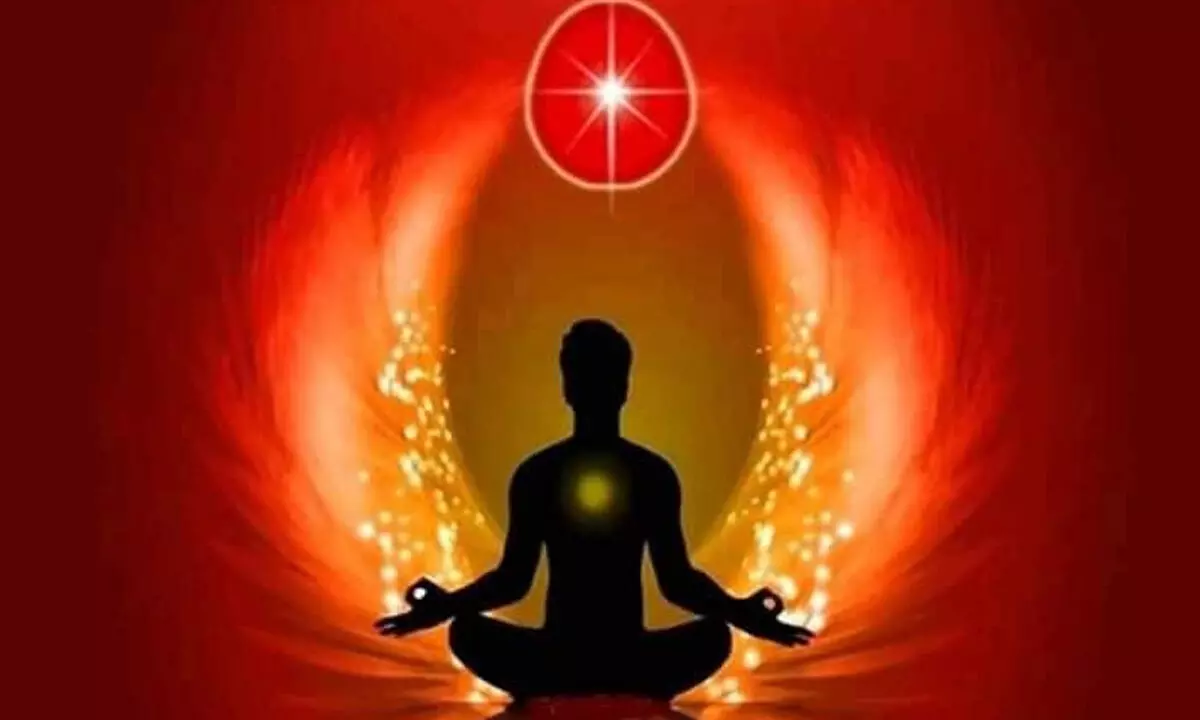Meditating on the Four Seasons and the Four Stages of Our Life

Meditating on the Four Seasons and the Four Stages of Our Life
Seasons develop due to Earth's tilt on its axis with respect to the orbital plane, the invisible, flat disc around which most solar system objects revolve around the sun. An invisible line known as the earth's axis passes through its centre from pole to pole. The planet revolves around its axis.
Seasons develop due to Earth's tilt on its axis with respect to the orbital plane, the invisible, flat disc around which most solar system objects revolve around the sun. An invisible line known as the earth's axis passes through its centre from pole to pole. The planet revolves around its axis.
Spring
Vegetation starts to grow once seeds germinate in the spring. The climate is more humid and warm. Animals awaken or return from warmer regions, frequently carrying young.
Aarambh Dhyan
Aarambh means 'to start' or 'to begin'. This is a technique of meditation that needs to be done before you start something. If you do anything with a meditative state of mind, that work is sure to know perfection. So mediate on the whole process before you begin. We can use this method to sow the seeds that can bring about a significant improvement in our life. Whether we want to start a new habit, change our response, or behaviour all depends on the mind.
Summer
The hottest days of the year may occur during the summer. Heat waves and droughts may be problematic for people, animals, and plants if they reach dangerously high levels.
Chandra Bhedi Dhyan (Moon Channel Meditation)
Chandra means the Moon; Bhedi can be translated as passing through. In Chandra Bhedi Pranayama, the left nostril is used for inhalation and exhalation. For Chandra Bhedi Shodan, inhalation is from the left and the right nostril is used for exhalation. Chandra Bhedi pranayama triggers the entire Ida nadi or lunar channel. On inhalation, energy passes through Ida (Chandra) Nadi and exhalation through Pingala or Surya Nadi. These are larger nadis that hold the balance of energy created by the sun and the moon and their magnetism.
Autumn
Temperatures once more fall in the autumn or fall. Plants could start to go dormant. Animals may store food in anticipation of the impending cold or move to warmer climates. Numerous cultures have had yearly festivities to commemorate abundant harvests.
Jal Dhyan (Water Meditation)
Jal Dhyan is of two types. First, it can be done on drinking water or on a water body such as a pond, lake etc. As a type of meditation on drinking water, Jal Dhyan is done by offering positive affirmation to water before you drink it. Statements or affirmations such as 'Water is good for me', 'It is pure', etc., will cleanse the water energies and bring out its most beneficial properties. Also, ensure that before you drink water, you are seated and to drink it with relish and gratitude.
Winter
It gets chilly during the winter. While chilly rain falls exclusively in some regions, others may encounter snow or ice. Animals develop strategies to stay warm and may have altered their appearance to fit the environment.
Surya Bhedi Dhyan (Sun Channel Meditation)
The Surya Bhedi pranayama channelizes the energies of Surya or the Sun within you. It is the piercing of the Surya nadi or the channelizing of the surya nadi which helps you gain the power of the Sun. Your practice will trigger the Surya Nadi or sun channel within your body. The qualities of the sun-vigour, logic, the functionality of the body, strength and even your physicality, all gain power with this practice. For Surya Bhedi Shodan, right nostril is used for inhalation and the left for exhalation. For Surya Bhedi Pranayama, inhalation is from the right and the right nostril is also used for exhalation.
4 Stage of Life Brahmacharya
The beginning of life is called Brahmacharya. It is the life stage where students prepare for success in later phases. In order to create the groundwork for spiritual practise, people should also pursue religious education. One of the yamas is also mentioned by Brahmacharya (core ethical principles of Hinduism) is celibacy, broadly defined as restraint and moderation.
Grihastha
The following stage is known as Grihastha. The "householder" stage is what most people naturally do when they graduate from school: maintaining a home and starting a family. Most Hindus opt to practise their spirituality while raising families, however some choose to forego having children and/or remain unmarried for various reasons. People are urged to create and spread riches (achieving artha's purpose) and to enjoy themselves (kama), all the while acting morally (dharma).
Vanaprashta
The third stage is called vanaprashta. It starts once people have taken care of their family commitments. When people reached this stage, they would begin to separate themselves from their families and the pursuit of material goals. They would then relocate to the forest, where they would live with other people who shared their desire for comfort, knowledge, peace, and freedom, and spend more time engaging in spiritual practise.
Sannyasa
Renunciation, or Sannyasa, is the fourth stage. There are two standard ways to enter this period of life. First, this stage is entered into by a select few Hindus who, from an early age, have a calling or desire to devote their entire lives to textual study and a monastic lifestyle, exclusively pursuing moksha under the guidance of a guru.
















